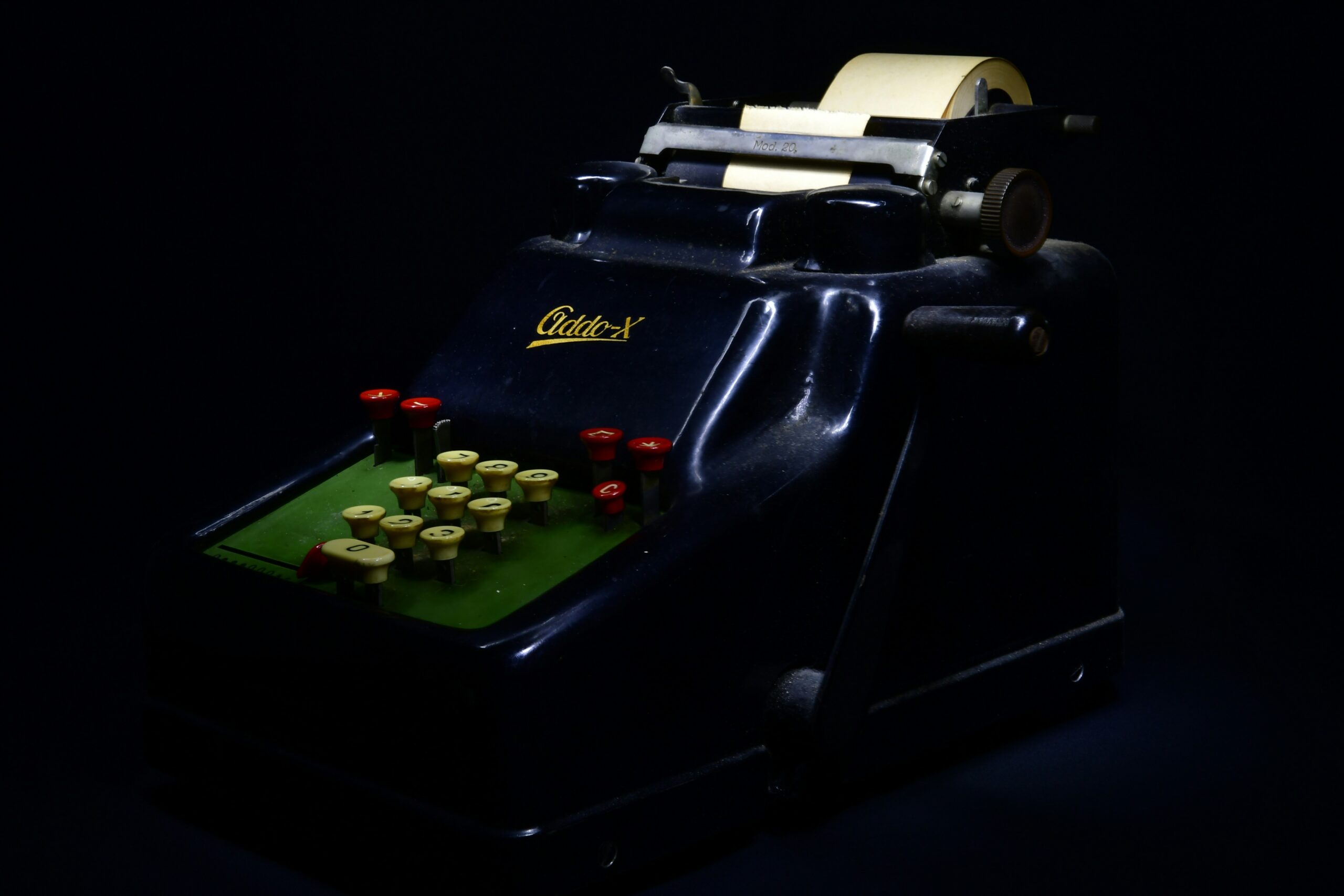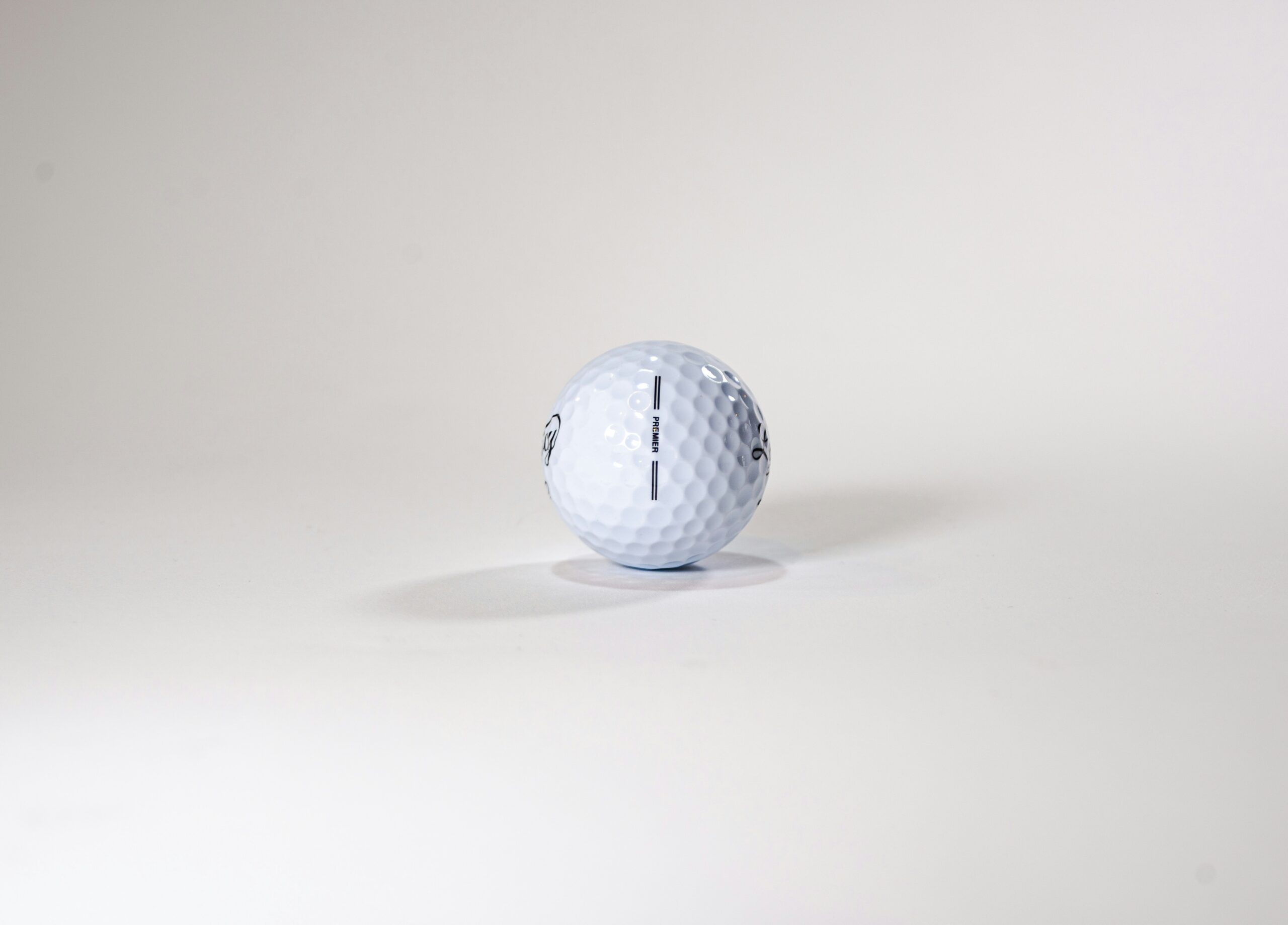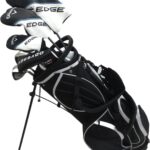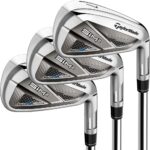Have you ever wondered what a golf full swing simulator actually is and how it can change your practice and play?

What Is A Golf Full Swing Simulator?
A golf full swing simulator is a system that lets you hit real golf shots and see virtual ball flight, shot data, and course visuals on a screen or monitor. You stand on a hitting surface, strike a real ball with a real club, and the simulator’s sensors and software translate that impact into digital ball flight and analytics. It’s designed to replicate the experience of hitting outdoors while providing detailed feedback you can use to improve.
This technology ranges from portable units you can set up in a garage to professional-grade installations used by coaches, club fitters, and commercial entertainment venues. The core idea is to combine physical impact with digital modeling so you can practice, play, or fit clubs with reliable data.
How It Works
A full swing simulator combines hardware and software to capture ball and club data, model the resulting flight, and display visuals. Multiple devices and technologies work together: launch monitors, cameras, impact sensors, a projection screen or TV, a hitting mat, and the simulation software that renders the ball flight and environment.
You hit the ball; sensors measure launch angle, ball speed, spin, club head speed, face angle, path, and more. The simulator’s software processes those inputs to calculate how the ball would have traveled in the real world, then shows that flight on a screen and records the data for analysis. Some systems use real-time high-speed cameras or photometric capture, while others rely on Doppler radar or infrared. Each method has strengths and trade-offs in accuracy, required space, and cost.
Key Components
You’ll typically find these components in a full swing simulator setup:
- Launch monitor: Measures ball and club data.
- Cameras or photometric sensors: Capture impact and ball markings.
- Projector and impact screen (or TV): Show visuals and stop the ball.
- Hitting mat and enclosure: Provide a hitting surface and safety barrier.
- Simulation software: Renders courses, practice ranges, and analytics.
- Computer or console: Runs the software and processes data.
Each component affects realism and the kind of feedback you receive. For example, high-speed cameras can offer detailed spin data, while radar excels at long-distance ball flight tracking.
Data Captured
Simulators can capture a wide range of metrics you’ll find helpful for improvement or club fitting:
- Ball speed
- Launch angle
- Launch direction
- Spin rate (backspin and sidespin)
- Carry distance and total distance
- Club head speed
- Club path
- Face angle at impact
- Angle of attack
- Shot dispersion
The depth and accuracy of data depend on the hardware and calibration. More advanced systems provide shot-by-shot video and slower-motion playback so you can see where your swing creates certain results.
Types of Tracking Technologies
Different simulators use different sensing technologies. Understanding the main approaches helps you choose a system that fits your goals.
| Technology | How It Works | Strengths | Limitations |
|---|---|---|---|
| Doppler Radar | Uses radio waves to track ball velocity and flight | Strong long-distance tracking, good for carry and total distance | Requires ball flight; can be affected by indoor reflections and close-range accuracy |
| Photometric / High-Speed Cameras | Uses multiple cameras to capture ball marks and motion at impact | High accuracy for spin and launch angles, strong indoors | Requires good lighting, line-of-sight, and more processing power |
| Infrared / Optical Sensors | Measures ball and club data at the hitting area | Quick setup, accurate for near-impact metrics | Limited long-flight tracking, can miss certain data points |
| Club Sensors / Impact Mats | Sensors in mat or on club measure local contact and club metrics | Useful for club data and consistency analysis | May not measure ball flight directly; less realistic for distance modeling |
Each method provides useful data, and many high-end systems combine approaches to improve accuracy.
Launch Monitors: The Heart of the System
The launch monitor is often the most critical part of a simulator for data accuracy. It’s the device that measures ball speed, spin, launch angle, and most of the inputs the software uses to model flight.
You’ll find three broad categories of launch monitors:
- Radar-based units (e.g., Doppler): Good for tracking full ball flights.
- Camera-based units: Capture high-resolution images at impact for spin and launch.
- Hybrid systems: Combine radar and camera inputs for better overall accuracy.
When comparing launch monitors, consider accuracy, required setup space, ease of indoor use, and whether the device supports your training goals and software.
Popular Launch Monitor Features
You can expect features such as:
- Shot shaping indicators (draw/fade)
- Club head speed and tempo metrics
- Connective compatibility with simulation software and apps
- Data export options for coaching or fitting
- Practice modes, video overlays, and virtual ranges
Some units are plug-and-play with current simulation platforms, while others require software licenses or updates.

Projectors, Screens, and Visuals
A convincing visual environment improves the realism of your practice sessions. Full swing simulators typically use one of two display methods: a projection onto an impact screen or a large, high-resolution TV/monitor.
- Impact screen with projector: Gives a full-immersion feel and allows you to hit the ball into the screen safely. You’ll want a durable impact screen and a short-throw or ultra-short-throw projector to avoid shadows and reduce required depth.
- Large TV/Monitor: Works well in tighter spaces and provides crisp visuals, but you may need a net in front of the screen to catch the ball, which reduces the immersive experience.
When choosing visuals, consider resolution, refresh rate, and projector throw distance. Brightness and color accuracy matter for course realism, and the impact screen should be designed to handle repeated shots.
Projector Tips
- Use ultra-short throw projectors to reduce required depth.
- Match projector lumens to room lighting; higher lumens are better for brighter rooms.
- Position the projector to minimize shadows and ensure the image fills the screen properly.
Hitting Mats, Turf, and Enclosures
The hitting surface affects both comfort and realism. A high-quality mat allows you to turf shots cleanly and provides realistic club interaction. For full swing analysis and to protect your floor, use a durable mat with built-in tee options.
You’ll also want an enclosure or net system to contain balls and protect surroundings. Enclosures come in frames with nets or more permanent walls and ceilings for commercial simulators.
Considerations for the Mat and Enclosure
- Durability: Choose mats that withstand repeated strikes without excessive wear.
- Feedback: Some mats are firmer or softer, influencing how the club feels at impact.
- Turf realism: If you practice fairway or rough shots, consider having different turf sections.
- Safety: Enclosures should prevent ball escape and protect electronics.

Simulation Software and Course Libraries
Software turns raw data into playable courses, practice modes, and training drills. Many simulator platforms offer:
- Virtual rounds on real courses (licensed or approximated)
- Driving ranges with data overlays
- Practice aids for distance control, trajectory, or short game
- Club fitting modules and comparison tools
- Multiplayer or online play options
The quality of software impacts your experience; realistic ball physics, ground interaction, and course graphics matter. Some platforms are designed more for entertainment, while others prioritize accurate physics for fitting and coaching.
Popular Software Features
- Shot replay and slow motion
- Heatmaps and dispersion charts
- Customizable weather and wind conditions
- Multiplayer tournament play
- Integration with coaching tools and lesson delivery
Look for a software suite that aligns with whether you want serious training, entertaining play with friends, or commercial use.
Types of Full Swing Simulators
Simulators come in various formats depending on your needs, space, and budget. Here are the common types:
Home Simulators
Designed for personal use in a garage, spare room, or basement. They balance cost and realism, often using camera- or radar-based launch monitors and a projection screen or TV.
You should choose a home simulator if you want regular practice, entertainment, and moderate investment.
Commercial Simulators
Built for performance and durability in venues like golf centers, indoor entertainment facilities, or pro shops. These systems emphasize robustness, high accuracy, and networking for multiple bays.
Commercial setups are ideal if you plan to monetize play or need heavy usage.
Portable Simulators
Compact and lightweight systems that use small sensors or attach to your club/ball and connect to a tablet or laptop. Portability is great if you want to take a simulator between locations.
You’ll trade some accuracy and visual immersion for convenience with portable units.
Fitting Bays and Professional Systems
These top-tier installations are used by fitters and coaches and include the highest-grade sensors, multiple cameras, specialized mats, and advanced software. They’re optimized for data accuracy and repeatability.
If club fitting or professional coaching is your main goal, you’ll want a system geared toward precision and repeatable measurements.
| Type | Best For | Typical Price Range | Pros | Cons |
|---|---|---|---|---|
| Home | Personal practice & entertainment | $2,000–$20,000+ | Balance of cost and realism | May need space & light control |
| Commercial | Venues & high use | $20,000–$100,000+ | Durable, accurate, networked | High upfront cost & professional install |
| Portable | Mobility & casual practice | $200–$3,000 | Easy to transport, low cost | Limited accuracy & visuals |
| Fitting/Pro | Club fitting & coaching | $10,000–$100,000+ | High accuracy, advanced data | Very expensive, complex setup |
Benefits of Using a Full Swing Simulator
A full swing simulator offers a wide range of advantages you’ll appreciate:
- Year-round practice: You can play and practice regardless of weather or daylight.
- Detailed feedback: Instant metrics help you diagnose issues and monitor progress.
- Time efficiency: Practice sessions can be shorter and more focused with measurable goals.
- Course access: You can play famous courses virtually without traveling.
- Entertainment: Simulators are great for social play and competitions.
- Club fitting: Accurate data helps you choose the right shafts, lofts, and club heads.
- Safety and convenience: Practice at home without worries about lost balls or errant shots.
You’ll find simulators convenient for targeted improvement and enjoyable for social rounds with friends or family.
Limitations and Considerations
While simulators are powerful, there are limitations you need to understand before investing:
- Space requirements: Some systems require significant depth and ceiling height.
- Cost: High-accuracy systems are expensive, especially with professional installation.
- Realism: Turf interaction and short-game feel can be different than outdoors.
- Calibration: Systems may need regular calibration to maintain accuracy.
- Lighting: Camera-based systems require controlled lighting conditions.
- Ball compatibility: Some launch monitors perform better with certain ball types; you may need practice balls indoors.
If you plan a serious simulator setup, weigh these trade-offs and prioritize the factors most important to your goals.
Noise and Neighbors
If you live in a shared building or close quarters, consider noise and vibration from strikes against the screen. You may need soundproofing or a quieter hitting surface to avoid complaints.
Choosing the Right Simulator for You
When selecting a simulator, ask these questions:
- What are your primary goals? Coaching, club fitting, entertainment, or year-round practice?
- What is your budget, including installation and ongoing software fees?
- How much dedicated space do you have? Consider height, width, and depth.
- Do you need portability or a permanent installation?
- How important is data accuracy, and which metrics matter most?
- Do you want multiplayer or course libraries included?
Answering these questions helps you narrow choices and avoid paying for features you won’t use.
Budget Guidance
- Under $1,000: You’ll get portable or basic camera options with limited visuals.
- $1,000–$5,000: Good home systems with decent launch monitors and basic screens.
- $5,000–$20,000: High-quality home setups with accurate launch monitors and immersive screens.
- $20,000+: Commercial-grade systems or premium home installations with high accuracy and robust software.
Consider long-term costs such as software subscriptions, hardware upgrades, and replacement screens or mats.
Setup and Installation Tips
Proper setup maximizes accuracy and enjoyment. Follow these practical tips:
- Room size: Aim for at least 10–12 feet width and 12–16 feet depth for many home setups; more depth is better for certain launch monitors.
- Ceiling height: 9–10 feet is minimum for most full swings; taller ceilings reduce risk of overhead contact.
- Lighting: Use stable, non-flickering lighting; avoid direct sunlight on sensors or the screen.
- Projector placement: Use ultra-short-throw projectors in tight spaces to reduce shadows and minimize required depth.
- Screen distance: Position the screen to provide proper image sizing and safe ball impact distance.
- Flooring: A stable, level floor prevents movement. Use rubber underlay for sound dampening.
- Ball containment: Have a reliable enclosure or net behind the impact screen to protect walls and electronics.
- Calibration: Run the manufacturer’s calibration routine for accuracy and recheck periodically.
If you hire professionals, make sure they account for electrical, mounting, and structural needs.
Using the Simulator Effectively
To get the most from your simulator, approach practice with structure:
- Set goals: Focus on specific improvements—distance control, launch angle, or shot shape.
- Use data: Compare metrics over time and look for patterns, not single-shot outliers.
- Practice with purpose: Short, focused sessions are often more productive than long aimless hitting.
- Mix drills and play: Alternate between skill drills (e.g., tempo work) and playing virtual holes to apply skills under pressure.
- Record video: Combine video with data to correlate swing mechanics and outcomes.
- Track progress: Use heatmaps and dispersion charts to monitor consistency and improvement.
You’ll learn faster when you use the simulator’s analytics to inform deliberate practice.
Maintenance and Troubleshooting
Regular maintenance keeps your simulator reliable:
- Screen care: Inspect for wear and clean per manufacturer recommendations.
- Mat upkeep: Replace worn sections and rotate mats if possible.
- Software updates: Keep firmware and software up to date to maintain compatibility and accuracy.
- Sensor checks: Clean camera lenses and sensor areas to avoid dust or glare problems.
- Calibration: Recalibrate after hardware changes or if data seems inconsistent.
If you notice odd readings, check lighting, sensor alignment, and ball quality first. Many inaccuracies come from simple setup issues.
Frequently Asked Questions
What space do I need for a full swing simulator?
- Aim for a minimum of 10–12 feet width, 12–16 feet depth, and 9–10 feet ceiling for comfortable full swings. Smaller spaces are possible with limited swing or lofted shots but may restrict club selection.
Can a simulator accurately measure spin?
- High-end camera-based and hybrid systems measure spin most accurately. Radar can estimate spin well under ideal conditions but might be less precise indoors without proper calibration.
Do you have to use special balls?
- Some simulators work best with regular golf balls, while portable units may require foam or reduced-flight balls for safety. Always check compatibility and manufacturer recommendations.
Is a simulator worth it for amateur golfers?
- If you’re serious about improving, practicing year-round, or fitting clubs, a simulator can be an excellent investment. Casual players may prefer lower-cost options or green fees, depending on priorities.
How much does a full setup cost?
- A complete home simulator can range from a few thousand dollars to over $20,000 depending on accuracy, projector quality, screen size, and software. Commercial systems and professional fitting bays cost significantly more.
Conclusion
If you want reliable feedback, year-round practice, and the ability to play virtual courses, a golf full swing simulator could be a valuable addition to your training setup. You’ll gain data-driven insight into your swing, the convenience of indoor practice, and the flexibility to train with specific goals or enjoy social play. Consider your goals, budget, and space before choosing a system, and prioritize accuracy and software features that match how you want to use the simulator.
With the right setup and a focused practice routine, a full swing simulator becomes more than an entertainment tool—it becomes a powerful way to improve your game, refine equipment choices, and make every practice session count.








